Moonstone is a beautiful gem that has mesmerized people for hundreds of years with its unique glow that moves and dances in the light. Adularescence is the name of the unique effect that gives moonstone its beauty and a mystery air.
Have you ever wondered how to tell if a moonstone is real or fake? It might look hard to do this, especially since fakes can now look like the real thing thanks to technological progress.
You need to know about science and have a good eye for detail to distinguish between real and fake moonstones.
The real ones are hard to copy because they have depth and light play that can’t be copied. But fake ones might look too perfect or not have the small differences that real stone has.
Our detailed guide will teach you how to be a moonstone detective. We’ll share insights and tips on what to look for when trying to determine if a moonstone is genuine.
Understanding Natural Moonstone And Why Fakes Are Common
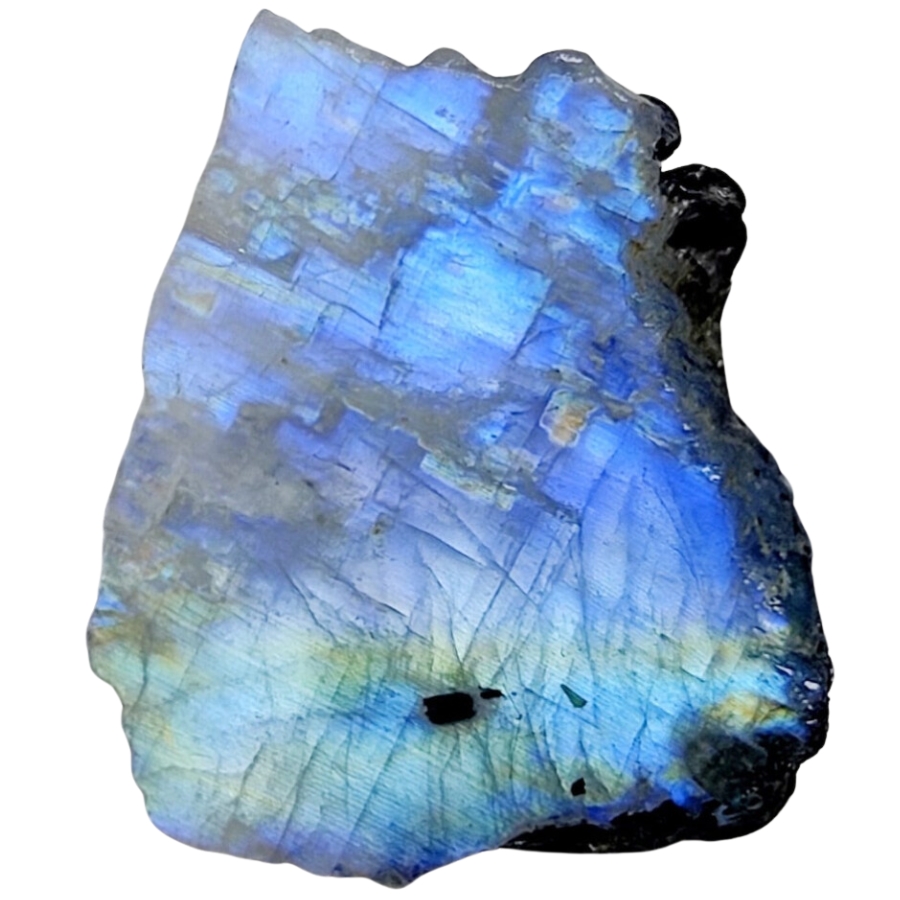
Moonstone is a fascinating gem that is made up of two minerals called orthoclase and albite. There are layers of these minerals inside the stone. Adularescence is the name for the beautiful glow that happens when light hits the layers.
Its name comes from the way this glow makes the stone look like moonlight moving across it. Moonstone can be white, blue, or peach most of the time, but it can also be gray or pink.
This stone has a magical look that makes people love to wear it in bracelets, earrings, and rings. Because it’s not very hard, you need to be careful not to scratch it.
Moonstone is valuable because of how beautiful it is and how it glows. Moonstones that are hard to find, like ones that glow a very clear blue, are worth more. Many people love this gem because it is one of a kind!
Why you’re seeing more fake moonstone these days
These days, there are more fake moonstones around for a few different reasons. People like real moonstone more and more because it’s pretty and they believe it brings luck and peace.
Because so many people want it, some sellers make fakes to meet the need and make more money. Also, fake stones that look a lot like real ones can now be made better with technology.
Since it’s less expensive to make and sell these fakes, some people sell them instead of the real, more expensive moonstone.
Also, some people don’t know the difference between real and fake moonstone, which makes it easier for fakes to be sold with real ones.
How To Identify Real Moonstone
With its mysterious glow and attractiveness, moonstone is a gem that many people want but not many can easily identify.
To tell the difference between a real moonstone and a fake one, you need to know its unique features, like its adularescence and structure.
This guide will show you easy, yet effective, ways to tell a real moonstone from a fake one, so you can enjoy and invest in the true beauty of this lovely gem.
So you can easily identify what rocks you have, we’ve put together guides to rocks and minerals from every state.
Check the price
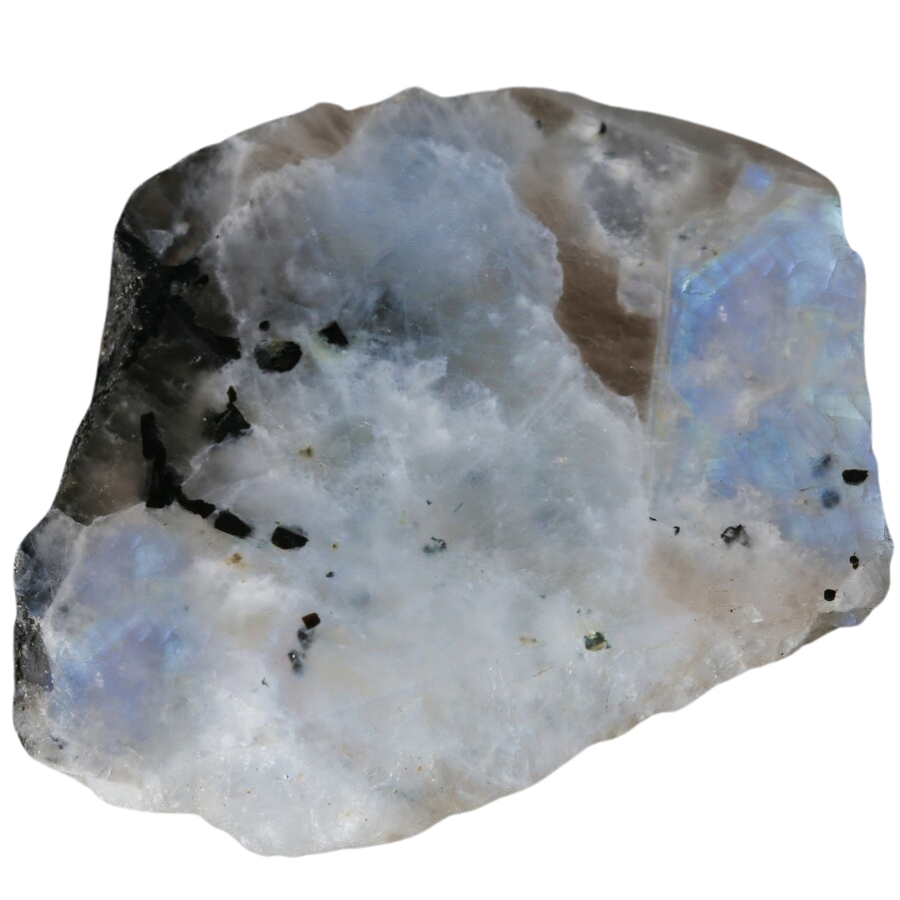
Do some study to see if the price of a moonstone is fair and to make sure it’s real. Compare the prices of moonstones at different jewelry shops, both online and off. Don’t forget that real moonstones aren’t cheap.
The cost varies based on color, size, and how well you can see the unique glow, which is called adularescence. If you discover a moonstone that is pretty low-cost, it might not be real.
Make sure you ask the seller about the stone too. One who is good at what they do should know where the moonstone came from and why it costs that much. Pay attention to deals or prices that seem too good to be true.
You can spend more on a beautiful moonstone that you know is real. Remember that you can always ask a gem expert what they think if you’re unsure.
Examine the color and transparency
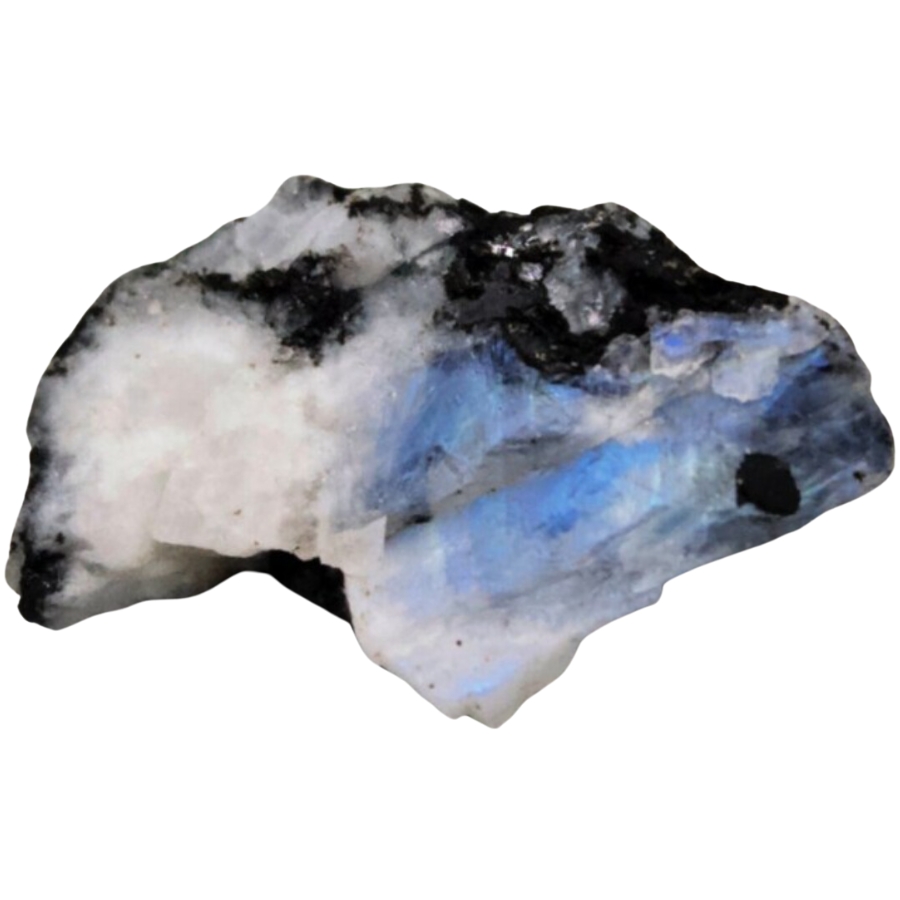
To check if a moonstone is real by looking at its color and transparency, you must observe it. Real moonstones have a soft, milky look and can be a bit see-through.
They come in colors like white, blue, peach, or grey. If the stone’s color is super bright or looks the same all over, that’s a red flag. Real moonstones usually have slight color changes and a gentle glow that moves.
This moving glow is called adularescence, like a light shining from inside the stone. This glow should shift and change when you turn the moonstone in the light.
Also, if the stone is too clear, like glass, or does not glow, it might not be a real moonstone. Remember, each real moonstone is unique, so its color and transparency won’t look exactly like every other one.
Feel the temperature
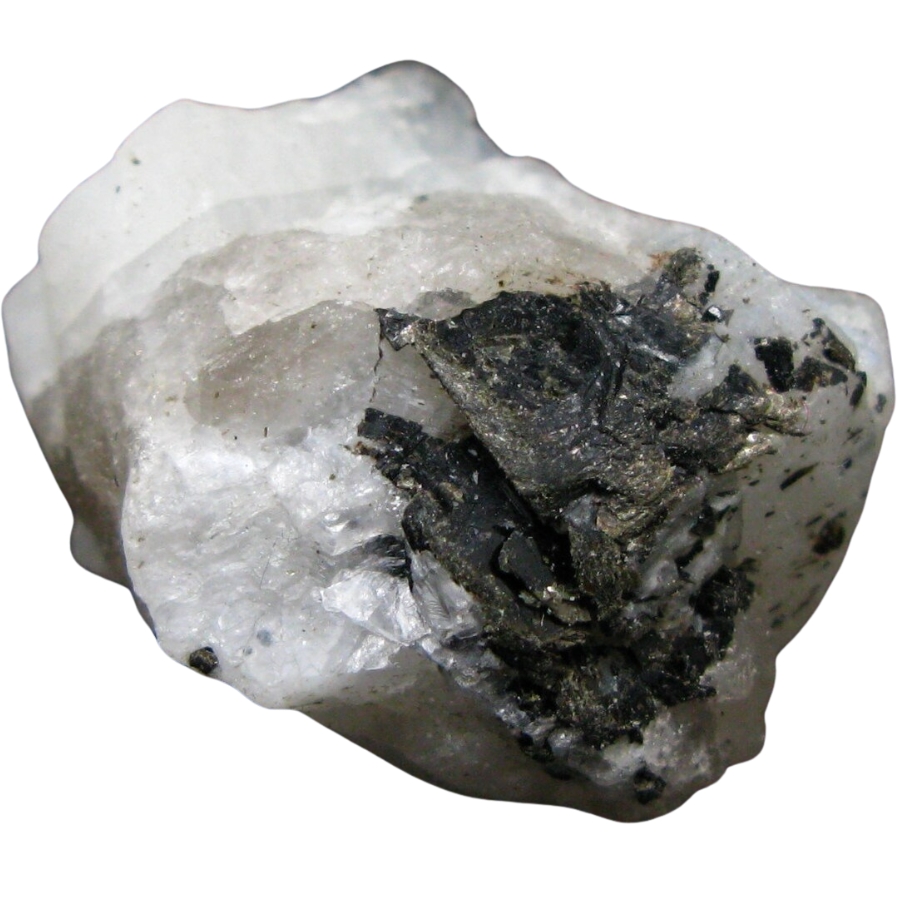
A great way to tell if a moonstone is real is to feel how hot or cold it is. When you touch real moonstone for the first time, it often feels cold. It’s yours to pick up and hold.
That thing should still feel cool after you hold it for a while. Gems like moonstone don’t get hot very quickly, so this is the case. Not so with fake moonstones.
They may be made of glass or plastic and warm quickly when you touch them. They don’t keep cool like real moonstone does. If you hold a moonstone and it feels warm immediately, it probably isn’t the real thing.
Again, this isn’t the only way to check, but it’s a simple and useful trick to use along with things like color and glow.
Observe imperfections
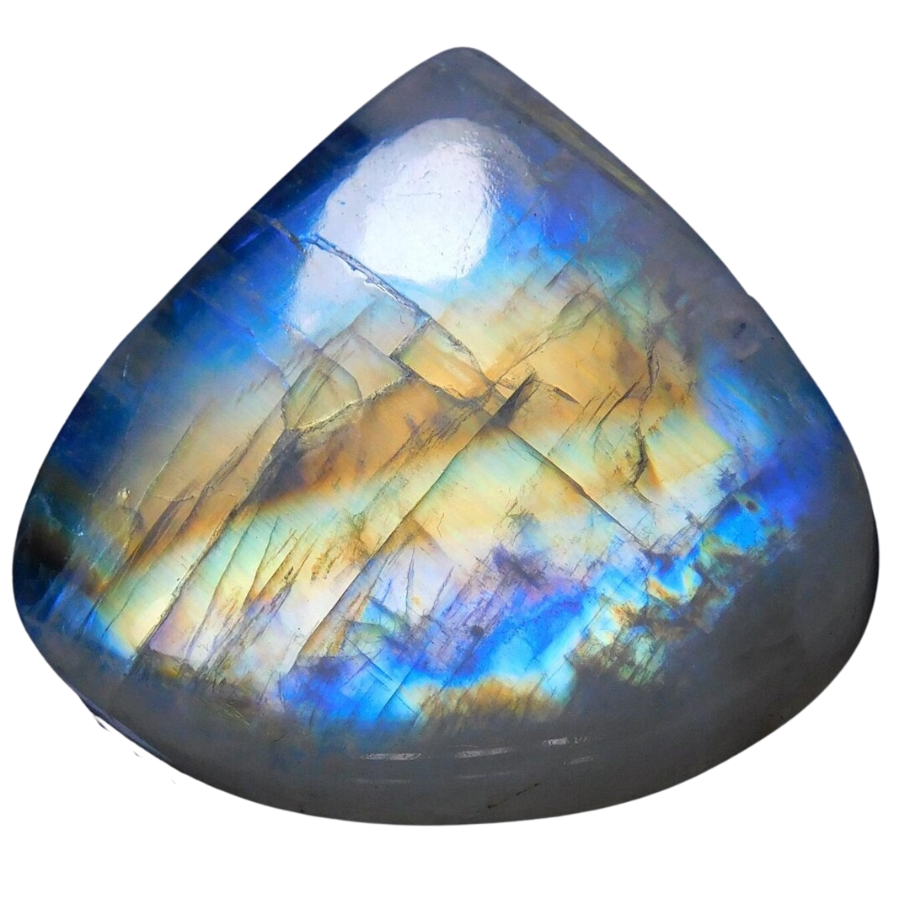
You can look for flaws in a moonstone to see if it is real. It is common for real moonstones to have tiny lines or flaws inside them. These are called inclusions.
These marks, which look like birthmarks, show that the stone is natural and not man-made. You might need a magnifying glass to really see these small lines or marks.
These flaws aren’t usually found in real moonstones, especially ones made of glass or plastic. They might look too good, like they don’t have any small flaws or marks inside.
Remember that because of these flaws, every real moonstone is different. That’s why if a moonstone doesn’t have any tiny lines or strange marks, that could mean it’s not real.
Here are some things you can look for to help you tell if the moonstone you have is real or not.
Presence of adularescence
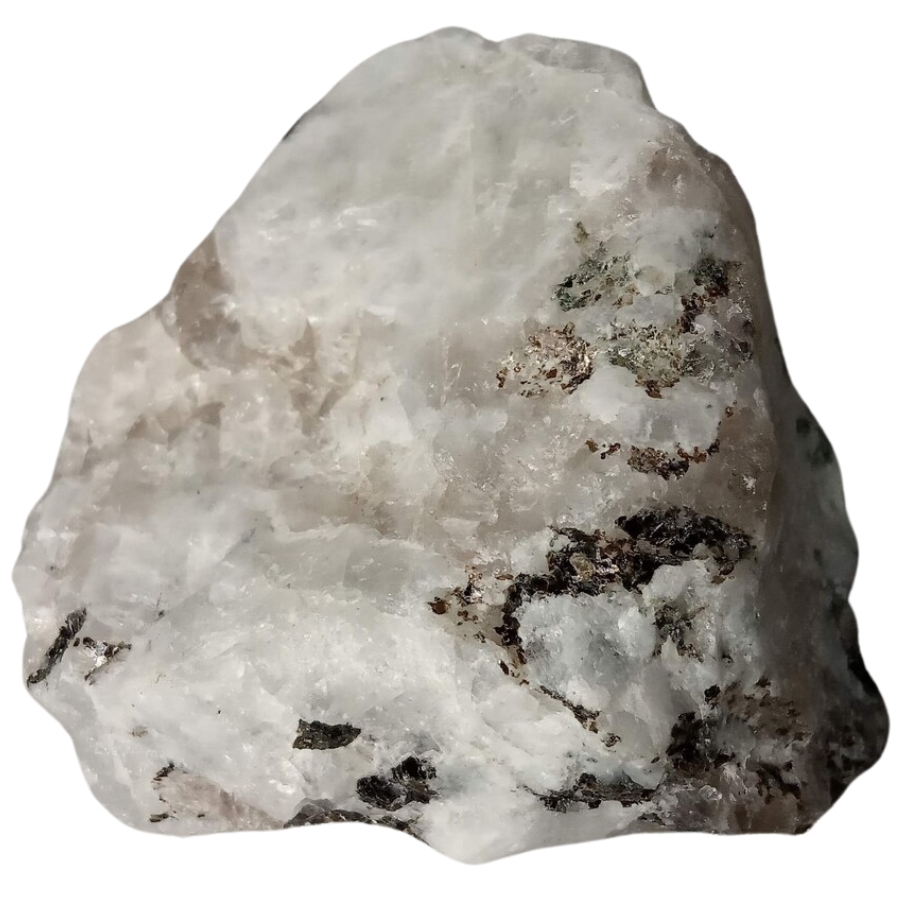
The unique glow that makes real moonstones so pretty is called adularescence. You need to look at the moonstone in different lights to see if this is true. Hold the stone and turn it slowly.
There should be a kind of light inside the stone that moves. If you move the stone, this light, which is blue or white, kind of floats on top of the surface. This change is known as adularescence.
It looks like there’s some moonlight inside the stone! They might not have this glow or look fake and not change much when you move the stone. Don’t forget that the glow in real moonstone is soft and faint, not very bright or flashy.
If you can see this fluffy, dreamy light in the stone, it’s likely a real moonstone.
The Different Types Of Fake Moonstone And What They Look Like
Fake moonstone comes in different types, and each one looks and feels different. You can tell them apart by how they feel, look, and weigh, even though they say they are moonstone. There is more information about each type below.
Albite
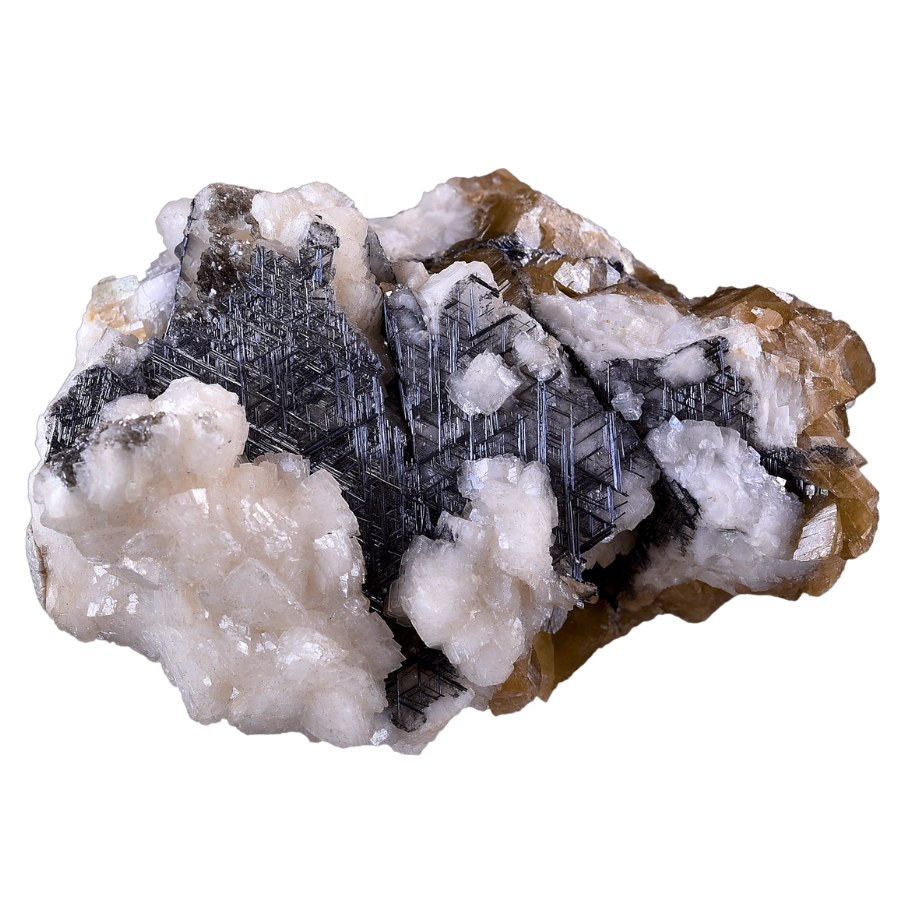
Albite is a feldspar class mineral. Others try to sell it by making it look like moonstone, even though it’s not the same.
It’s important to know that albite is usually white or gray and can have a shiny look. It doesn’t have adularescence, the unique glow that only real moonstone has.
It might be polished very well to make albite look more like moonstone. A smooth surface can make it look like moonstone, but it’s not the same.
The albite is sometimes cut in a unique way, like into a cabochon, which is a smooth, round shape. To show off their glow, this is how real moonstones are often cut. If you don’t know much about rocks, this cut of albite might make it look more like moonstone.
Still, albite doesn’t have the glow of real moonstone, no matter how much it’s polished or cut. So, to make it harder to tell the difference, people might light it up or put it near real moonstones.
How you can identify “albite” being sold as real moonstone
Check the glow
Real moonstone has a special kind of glow called adularescence, which looks like light moving inside it.
Albite, when sold as moonstone, usually doesn’t have this glow. It might look shiny, but it won’t have that cool, moonlight-like effect inside the stone.
Feel the texture
Real moonstone has a smooth and sometimes slightly bumpy surface. Albite, on the other hand, often feels more glassy or slippery.
If the stone is too smooth and feels more like glass, it might be albite.
Look at the color
Moonstones come in a variety of colors, but they usually have a milky, translucent look with a subtle play of colors.
Albite tends to be more consistently colored and lacks the depth and the soft, internal light play that you see in real moonstone.
Cubic zirconia
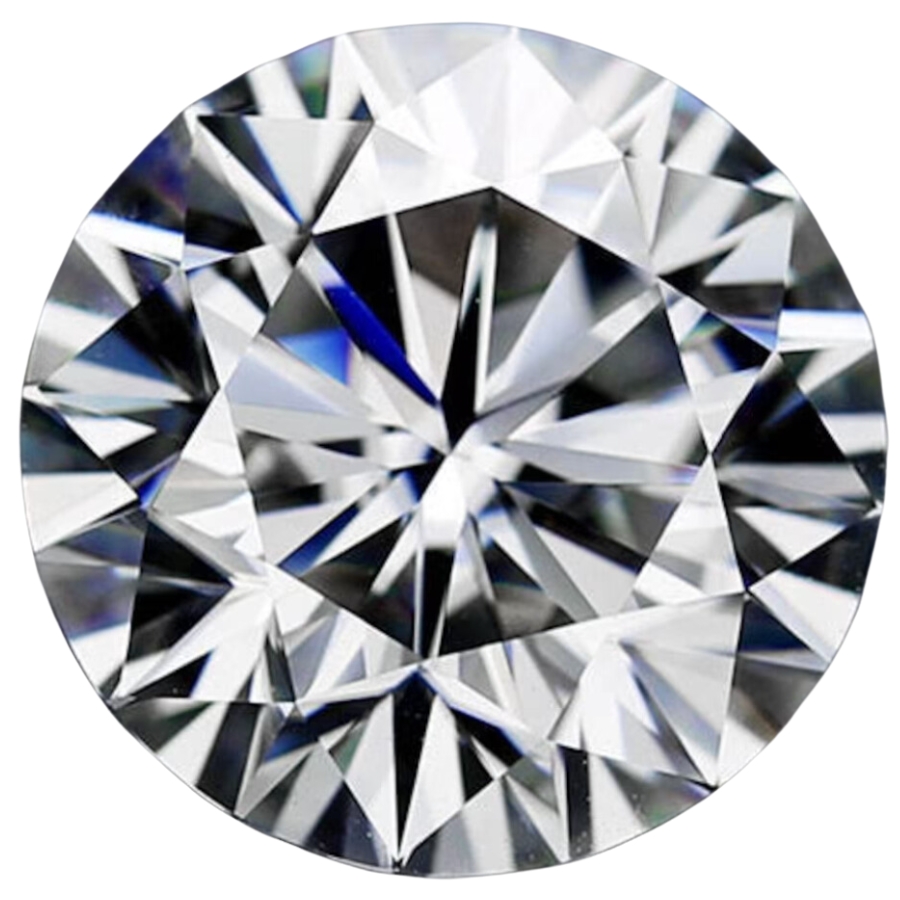
Cubic zirconia is a man-made stone that is often used to make fake moonstones. This is how they make it in a lab: A titanium dioxide powder is the first thing used by scientists.
They heat this powder to about 4,750 degrees Fahrenheit, which is very hot! The powder turns into crystals that look like diamonds during this process. It looks like these rocks are very hard and shiny.
They must think outside the box to make cubic zirconia look like moonstone. Adularescence is the name of the glow that moonstone has, but cubic zirconia doesn’t have it naturally.
For this reason, scientists might add certain things or use special treatments to make it glow. But these tricks can’t make it shine like a real moonstone.
How you can identify “cubic zirconia” being sold as real moonstone
Measure the weight
Cubic zirconia is heavier than moonstone. If the stone feels unusually heavy for its size, it could be a sign that it’s not real moonstone. Real moonstone has a lighter, more balanced weight when you hold it in your hand.
Observe brilliance and sparkle
Cubic zirconia, when sold as moonstone, is usually much more sparkly and reflective than real moonstone. Moonstone has a gentle, floating glow, but cubic zirconia shines brightly like a diamond and has sharp reflections.
Test the hardness
Cubic zirconia is really hard, almost as hard as a diamond. This means it won’t scratch easily.
Real moonstone is softer; it can get scratched by metal like a knife, but it’s harder than a fingernail. If the stone is super hard and doesn’t scratch, it might be cubic zirconia.
Dyed Stone
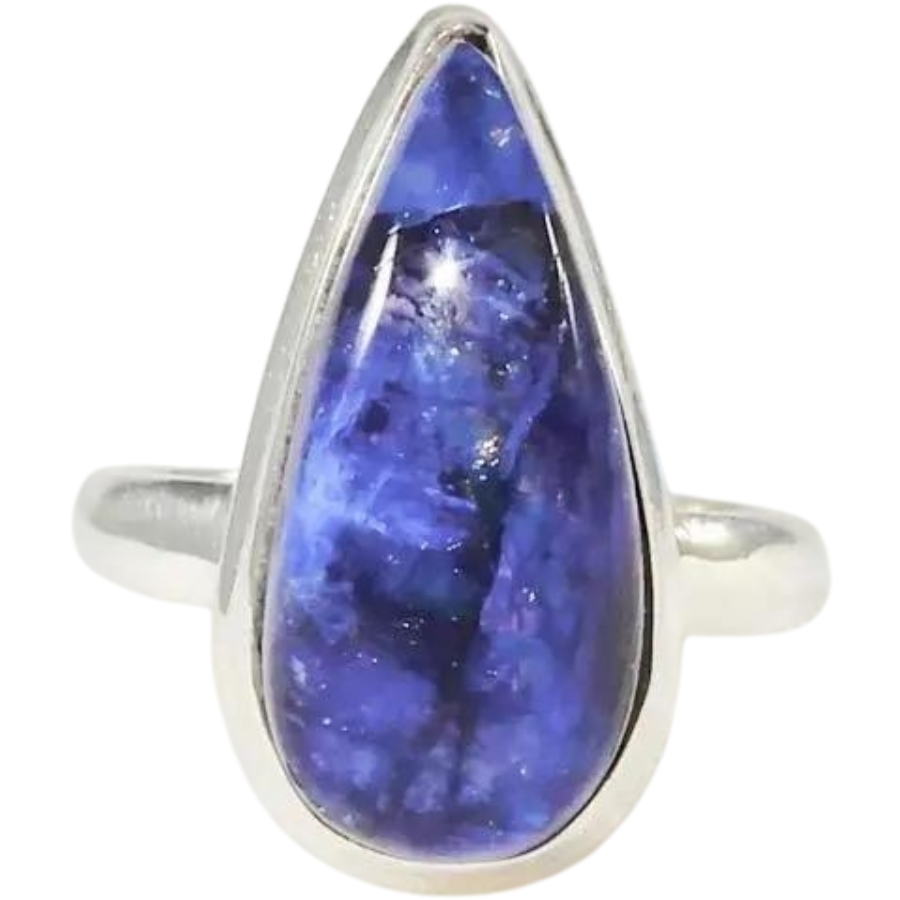
Dyed stones are regular stones that are colored to look like something else, in this case, moonstone. Here’s how they do it: First, they take stones that are usually cheaper and easier to find than real moonstone.
These stones might be clear or have a light color. The goal is to make them look like the pretty colors of real moonstone, which can be white, blue, peach, or grey.
They use certain chemicals or dyes to color the stones. The stones’ color changes when they are soaked in these paints. Based on how dark they want the color to be, this process could take hours or even days.
The dye changes the color of the stone by getting into all of its cracks and holes.
The tricky part is getting the dyed stones to look like real moonstone. Real moonstone has a special glow called adularescence, which is hard to copy.
So, even though the dyed stones might have similar colors, they usually don’t have the same kind of glow.
How you can identify “dyed stones” being sold as real moonstone
Check brightness of surface
Moonstones have gentle, natural colors like white, blue, peach, or grey. Dyed stones can have very bright or unnatural colors that you don’t usually see in natural moonstone.
If the color looks too bold or just doesn’t seem right, it could be a sign of dyeing.
Coat chipping off
If you rub the stone with a piece of white cloth and see color coming off, it’s likely dyed. Real moonstone doesn’t leave any color behind because its beauty is natural, not added on.
Uneven color
Dyed stones trying to look like moonstone often have uneven colors. Real moonstones have a soft, consistent color with a milky appearance.
If you see patches, streaks, or spots where the color is stronger or different, it might be a dyed stone.
Opalite
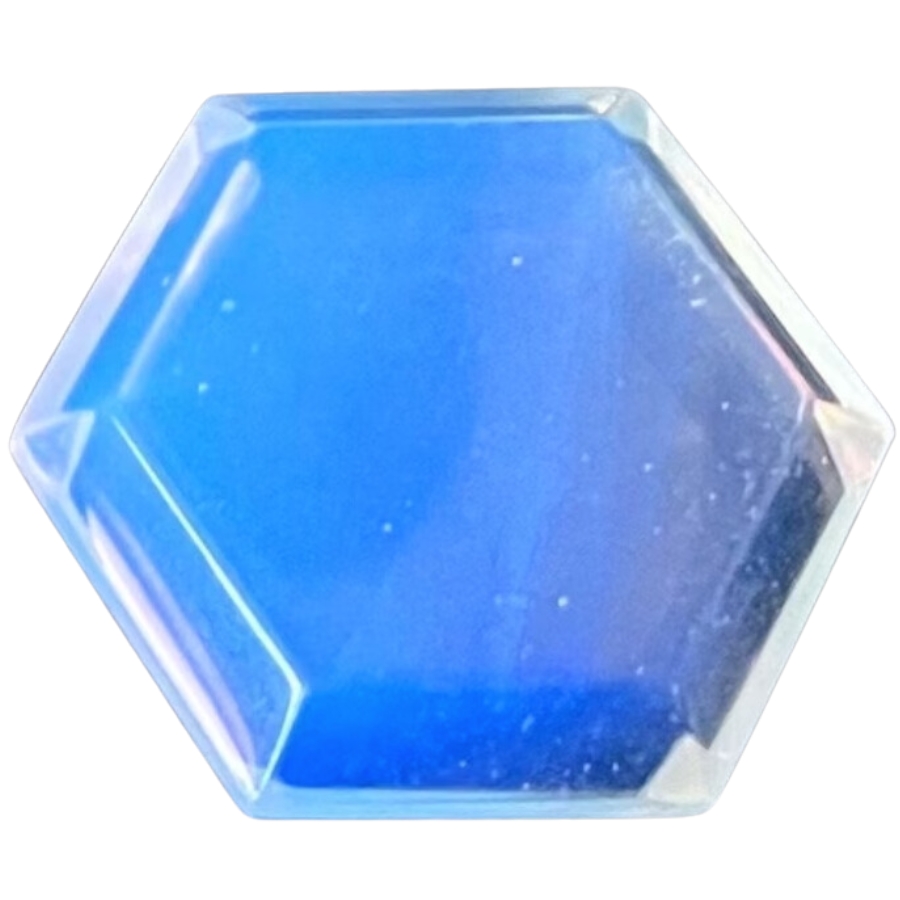
Opalite is a type of glass that was made by people. People sell it as moonstone even though it’s not a real stone.
To begin, a certain type of glass is used to make opal. The shimmering look of this glass comes from the metal that is mixed with it. It shines with many colors, like a rainbow.
When the rainbow hits opalite, it can look a bit like moonstone, since moonstone also has a pretty glow. The glow in opalite, on the other hand, looks more like a rainbow, while the glow in moonstone looks more like soft moonlight.
Opalite is usually very clear and can have a milky or frosty look. It’s really smooth and shiny because it’s glass. When you move it around, the colors can change a lot, which makes it pretty to look at.
People often use opalite to make jewelry like necklaces and earrings. It’s cheaper to make than finding and cutting real moonstone.
That’s why some sellers might try to sell opalite as moonstone – because it kind of looks similar and they can make more money.
How you can identify “opalite” being sold as real moonstone
Examine the rainbow color
Opalite, when sold as moonstone, often shows bright rainbow colors, especially under light.
Real moonstone usually has a softer, more subtle glow, mainly in shades of blue or white. If the stone displays a lot of rainbow colors, it’s likely opalite.
Feels different
Opalite tends to feel lighter and warmer than real moonstone. Moonstone stays cool longer when you hold it, but opalite will quickly warm up to your hand’s temperature. If the stone feels light and warms up fast, it’s likely not real moonstone.
Too clear or glassy
Opalite is man-made glass and is usually very clear, without any of the natural cloudiness found in real moonstone. If the stone looks super clear, like glass, and lacks a milky, translucent quality, it’s probably opalite.
Selenite
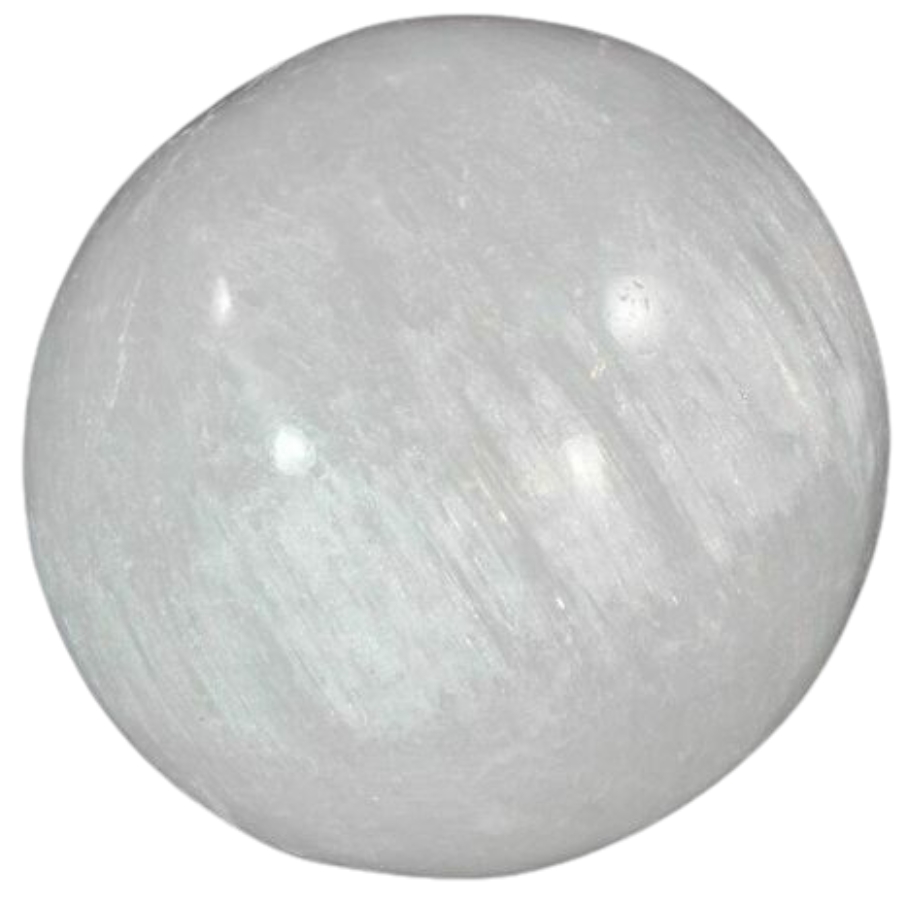
Selenite is a type of mineral that’s naturally formed, but it’s different from moonstone. Sometimes, people try to sell selenite as moonstone.
Selenite forms in a way that’s pretty cool. It grows in long, flat crystals and can be found in places where there are hot springs or in caves. It’s usually clear or white and can have a shiny, almost glass-like look.
Selenite is pretty soft – so soft that you can actually scratch it with your fingernail.
Now, to make selenite look like moonstone, they polish it really well. When selenite is polished, it can look a bit shiny and kind of like moonstone.
They might also cut it into shapes that are common for moonstone, like rounded or oval shapes. This can make it easier to mistake selenite for moonstone.
Even though selenite can be pretty, it’s not the same as moonstone. It lacks the moonstone’s magical glow and natural beauty. So, it’s good to know how to tell them apart, especially if you’re looking for a real moonstone.
How you can identify “selenite” being sold as real moonstone
Inspect softness and scratchability
Selenite is softer than real moonstone. You can easily scratch selenite with your fingernail or a coin, but real moonstone is harder and won’t scratch as easily. If the stone gets scratched quickly, it’s probably selenite.
Fiber-like or striped appearance
Selenite sometimes has a fiber-like or striped look, especially when you view it against the light.
Real moonstone doesn’t have these kinds of clear stripes or fibers. If you see these patterns in the stone, it’s a sign that it could be selenite, not moonstone.
Lack of adularescence
One of moonstone’s coolest features is its adularescence, which looks like a light glowing and moving inside it.
Selenite, even when polished to look like moonstone, doesn’t have this unique glow. If the stone lacks this moon-like light effect, it might be selenite.
How To Tell If Moonstone Is Real Vs Fake
We’ll talk about the main differences between real and fake moonstone and give you some notes to help you remember them. You will learn simple ways to tell if the moonstone you own or are looking to buy is real.
How To Identify Fake Moonstone When It’s Cut Or Polished
To spot a fake moonstone, especially when it’s been cut or polished, you need to have a good eye and know what makes real moonstone special.
When fake moonstones are cut or polished, they don’t always capture the natural beauty of the real thing. This section will teach you to tell the difference between real moonstone and fakes, so you can enjoy the real beauty of this lovely gem.
Feels like glass or plastic
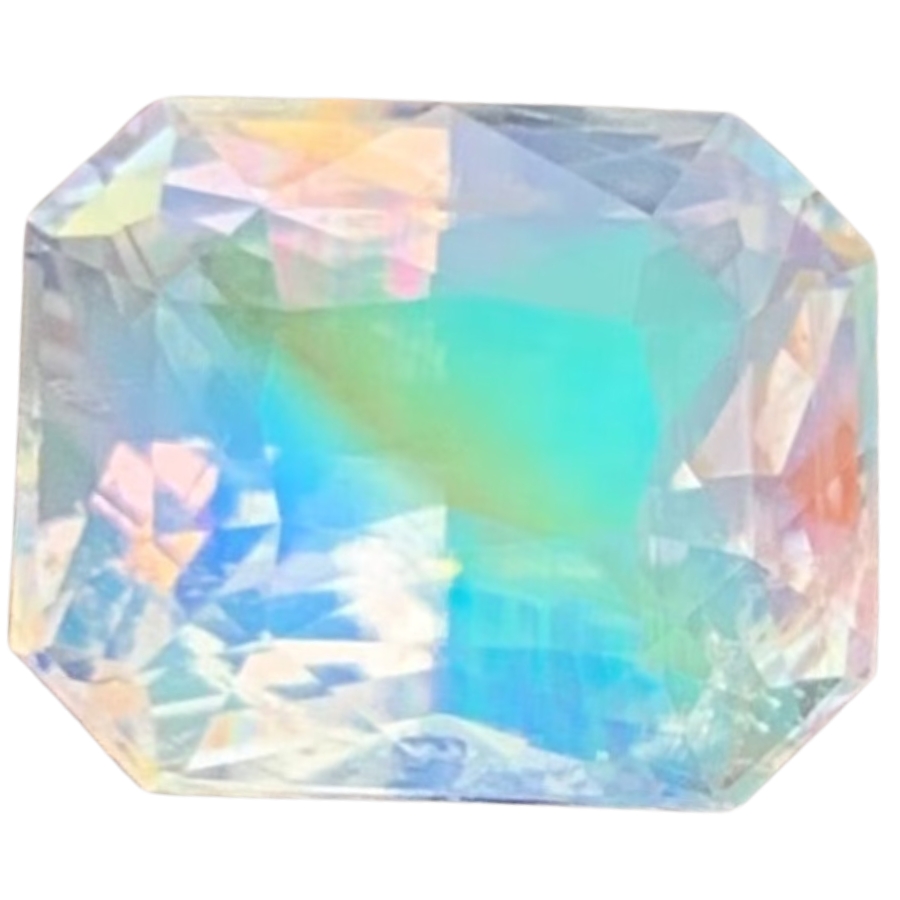
One way to tell if a cut and polished moonstone is real is to feel its warmth and texture. When you touch real moonstone, it feels different. It stays cool even after you hold it for a while.
What’s more, it feels like the right weight—not too heavy or too light. Glass or plastic moonstones, on the other hand, don’t feel the same. It might feel heavier and colder if it’s made of glass, but it warms up faster than real moonstone.
It will feel lighter and warmer right away, which is a big sign that it’s plastic. Plastic may also feel a little more slippery or like plastic than real moonstone. It may not feel as smooth and solid.
Maybe it’s not a real moonstone if it feels too light, warms up quickly, or just doesn’t feel right.
Incorrect cut
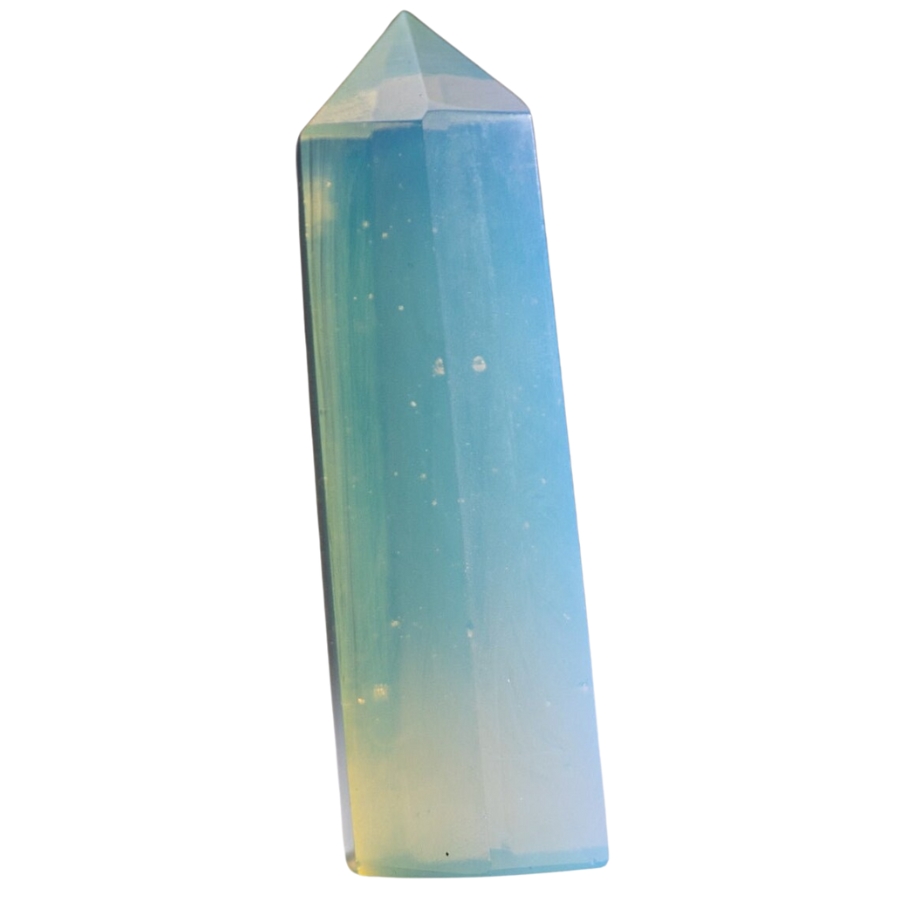
Moonstones that are real are generally cut in a certain way to show off their best feature, which is the adularescence, which looks like a soft light inside them. A ‘cabochon’ is the most usual shape for a real moonstone.
This cut is round and smooth, like a dome. It doesn’t have any sharp edges or flat faces. The moonstone’s glow looks its best in this shape.
It might not be real, though, if the moonstone you find is cut with a lot of flat, sharp edges, like a diamond. For diamonds and other stones that need to sparkle more, these cuts work well.
But moonstone doesn’t look good with them. For a moonstone to be real, the cabochon cut has to be just right. If the cut doesn’t look right, the stone may not be real.
Unnatural color
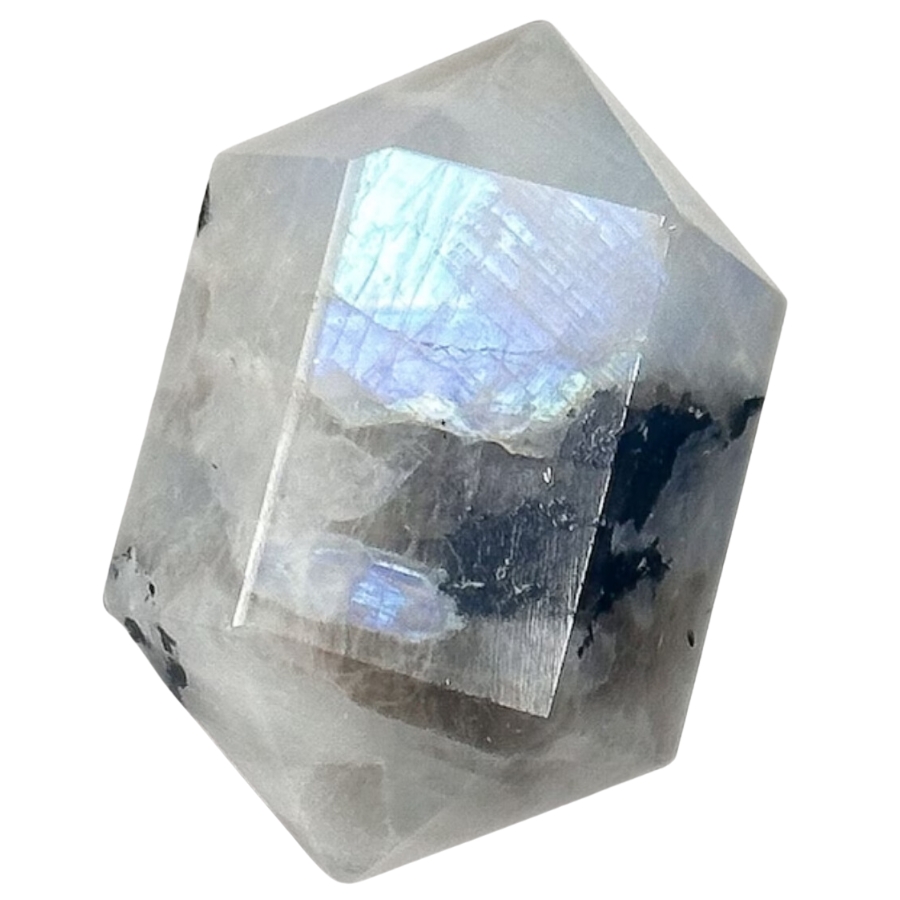
The colors of a moonstone can help you tell if it is real or not. Moonstones that are real come in soft colors like white, blue, peach, or gray. They have a soft, floating glow and look like milk.
It’s not too bright or flashy. What about fake moonstones? They might have colors that are too bright or don’t look like real life. In this case, a very bright blue moonstone or a color that seems to glow at night is a warning sign.
When it comes to real moonstone, the colors are more muted and delicate. The colors aren’t too strong or fake-looking. If a moonstone’s color seems too bright or just…off, it could mean that it’s not the real thing.
How To Identify Fake Moonstone When It’s Raw
There are a few important things to keep in mind when looking at raw moonstone to tell the difference between real and fake. Unlike polished stones, raw moonstones have natural features that can be minor but still help you tell them apart from fakes.
No adularescence
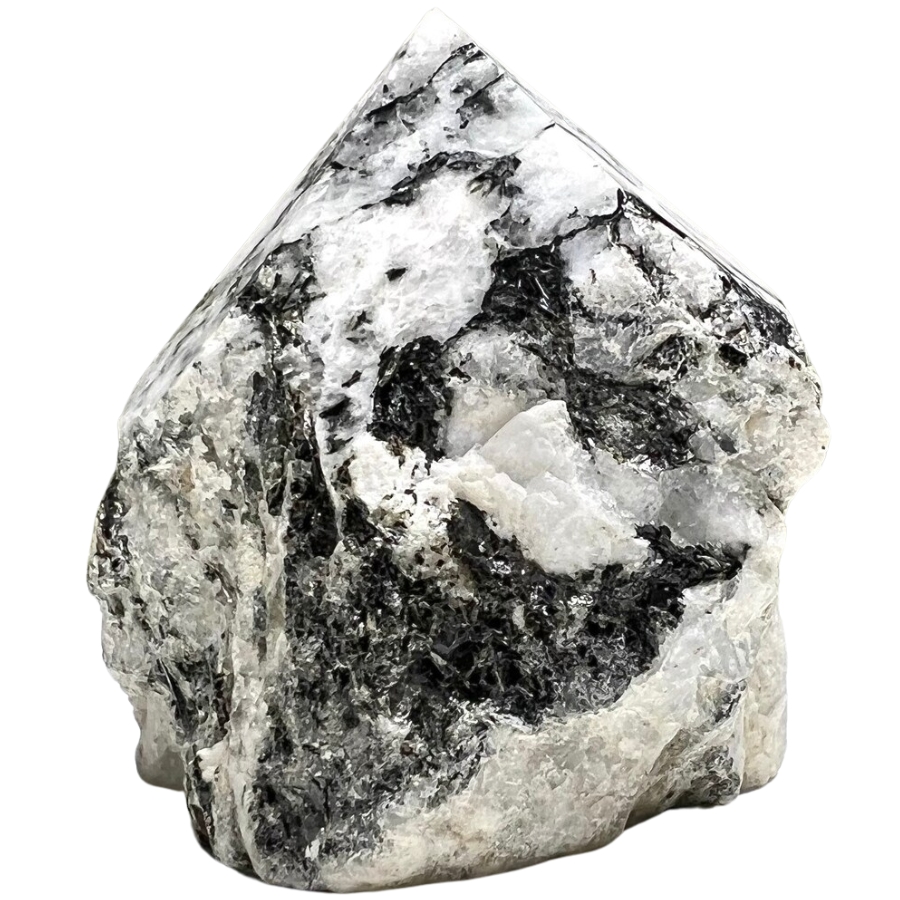
The word “adularescence” sounds fancy, but it just means that real moonstones have a certain glow. It’s easy to tell if a moonstone is real or fake because of this glow. It looks like a light moving inside the stone.
They should still have this glow even when they are “raw,” which means they haven’t been cut or cleaned. Moving the stone around in the light makes it look like a shimmer or soft light is floating across it.
More often than not, it’s a blue or white light that only moonstones give off. That’s a bad sign if you look at a raw moonstone and it doesn’t have this glow. If it doesn’t have any special lighting inside, it might just look dull or plain.
Raw fake moonstones may try to look shiny or sparkly, but they won’t have the real adularescence that real moonstones do. In conclusion, real moonstones should have a bit of that magical, moon-like light inside them even when they are completely rough. That part might not be there if the stone you’re looking at is so-so.
Too perfect appearance
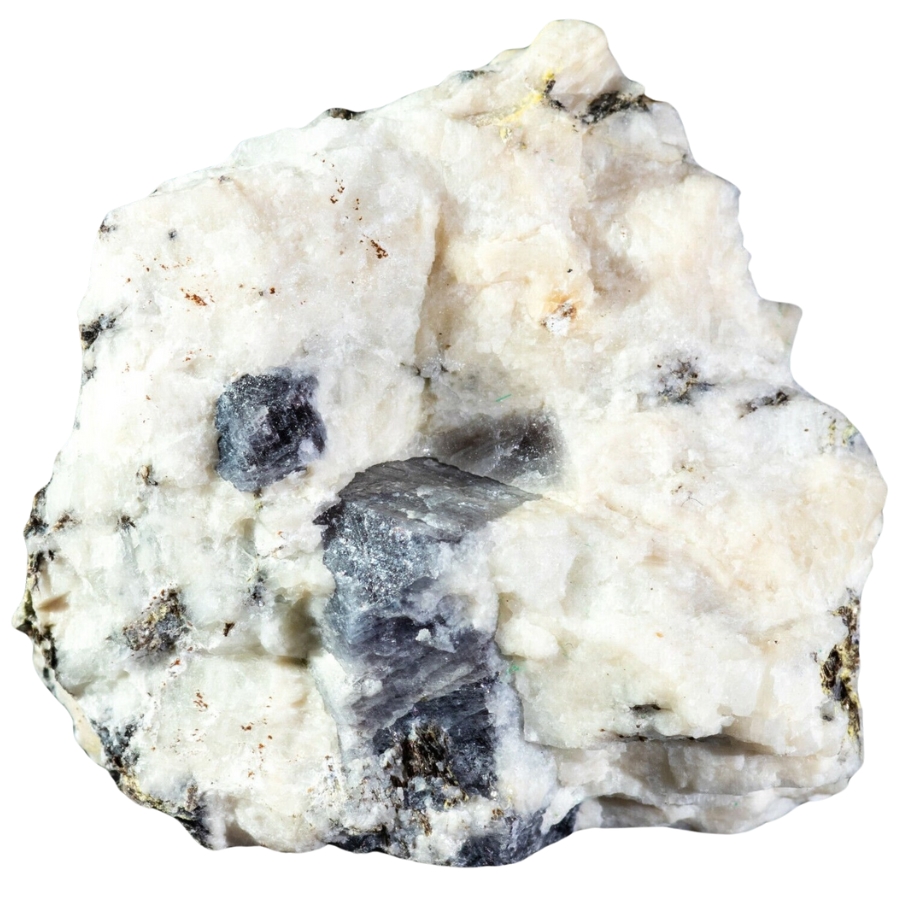
One thing to keep an eye out for in a raw moonstone is if it seems too perfect. Moonstones that aren’t polished won’t look like they belong in a fairy tale.
They often have small flaws and oddities, like tiny lines or cracks, and sometimes the color changes in some places.
It’s normal for stones to have flaws like these, and they help show that the stone is real. It looks like each real moonstone has its own marks on it.
But if a rough moonstone looks like it has no flaws or strange spots and every part of it is the same, that could mean it’s not real. It might mean that the stone was made in a factory where people worked hard to make it look beautiful.
Not perfect, though; Mother Nature makes things that are one of a kind. Most likely, a raw moonstone is not a real moonstone if it doesn’t have any of these natural flaws.
Moonstones that are real are like people: no two are exactly the same, and that’s what makes them unique.
Scratches easily
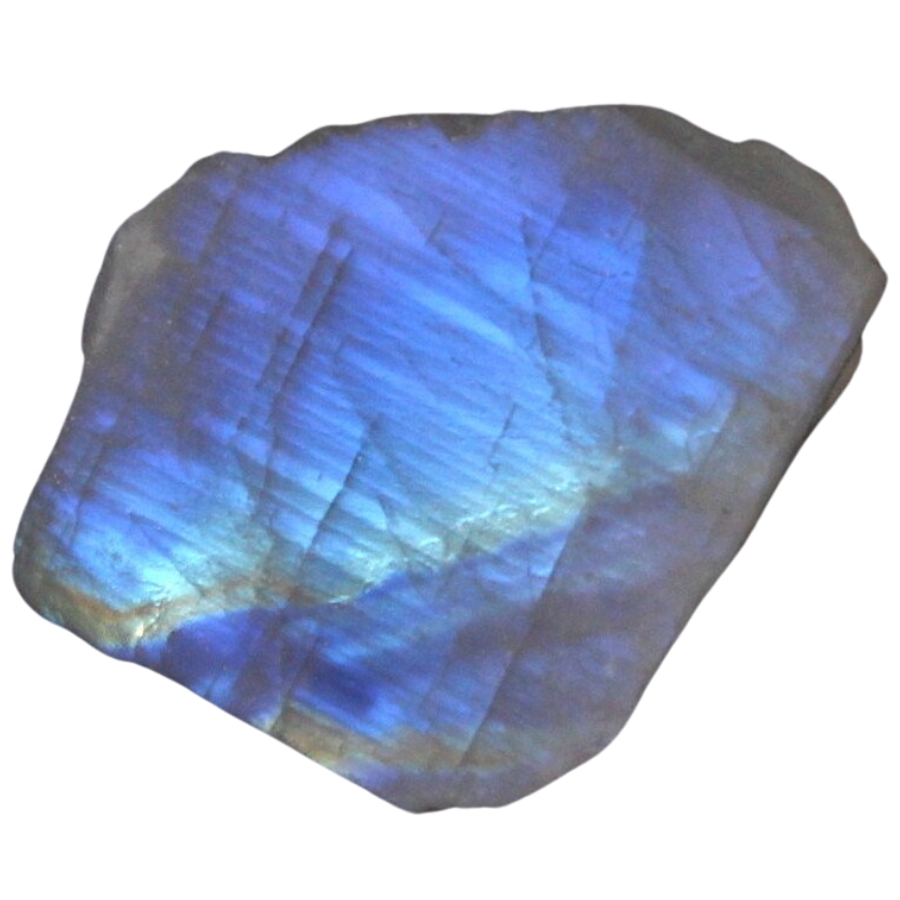
You can tell if a moonstone is real or fake by seeing how easy it is to scratch. Moonstone that is real is tough, but not really tough. It’s not quite in the middle.
In other words, it can get scratched, but not too badly. This is standard for moonstone if you can scratch it with a coin or your fingernail, but it takes some work.
Some stones aren’t really moonstone if they scratch really easily—like if you only touch them a little and they get a mark. It might be something lighter, like a piece of plastic that looks like moonstone.
You should also be able to scratch it, even if you try very hard. This is another sign that it might not be real. Real moonstone is in the middle; it’s not too hard to scratch, but it’s also not too easy.
Always remember that the stone might not be real if it’s very easy or very hard to scratch. That won’t last long with real moonstone.


